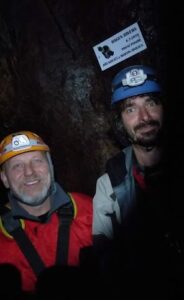
Our scuba diving team, Hagen Divers, set out to locate diveable places in the northwestern part of the Ore Mountains. The very name of these mountains tells you that it is an area where mining once took place.
We succeeded in finding a collapsed area at the location of an old mine, through which we found our way to the underground. Depressions are sometimes formed by old passages and tunnels located near the surface that have slumped, and they can sometimes uncover an entrance to the system. There are times when just removing a fallen tree will reveal a mystical opening and a long forgotten labyrinth of old passages. We were able to enter through such a space into the mine.
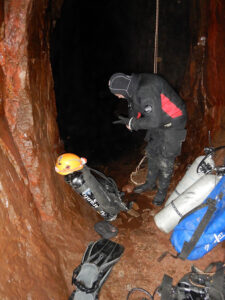
In cooperation with cavers, who sneak through any hole in the ground to find sleeping bats, we searched and managed to find a collapse that opened into an old, water-filled tin mine. The area had been walked extensively and only closed depressions found.
Unfortunately, the entrance is at an altitude of 1,000 meters (3,300 feet), which from the scuba diving point of view, makes it a pretty extreme altitude dive.
Another problem was reachability: all ancient paths have disappeared, and the majority of the surrounding area is mountain meadows. Not the beautiful fields of green grass one might expect, but rocky mountain fields: hole-spangled and covered with broken bushes and trees felled by the wind. The area is barely reachable by cross-country vehicles.
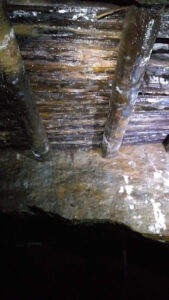
Finally, on the July 6, 2019, we had our first real dive. A year before, we had made one short discovery dive, but it was only 20 minutes long to acquaint ourselves with what would be waiting for us.
Since 1850 when the mining ceased, the mine has flooded with water. We were the first persons in 169 years to enter the dark depths through fallen timber supports and stones.
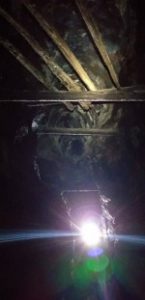
Descending to the lower tunnel, there were not any timber supports here; they were not needed where the tunnel was hewn in hard granite rock. Swimming 200 meters (650 feet) into the lower tunnel did not reveal an end. My breathing gas was diminishing, and so the dive was turned. On the way back, silt was falling that had been loosened and then released from the old 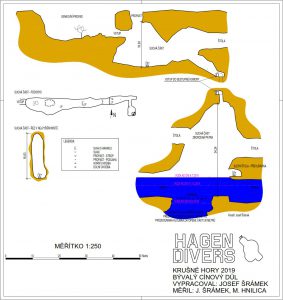
During this first exploration, we reached a depth of 30 meters (100 feet), and we inspected two small parts of two side tunnels. We suspect that the bottom of the mine may be as much asz` 150 meters (500 feet) deep, but that is only a best guess; it could be far more.
The time that we could not spend diving, we utilized for mapping the air-filled parts of the descent area. Josef and Martin took care of the measurements, and Josef created the map.
We are looking forward to our next adventures in the spring when the water levels will allow us to dive into this stunning underground.




